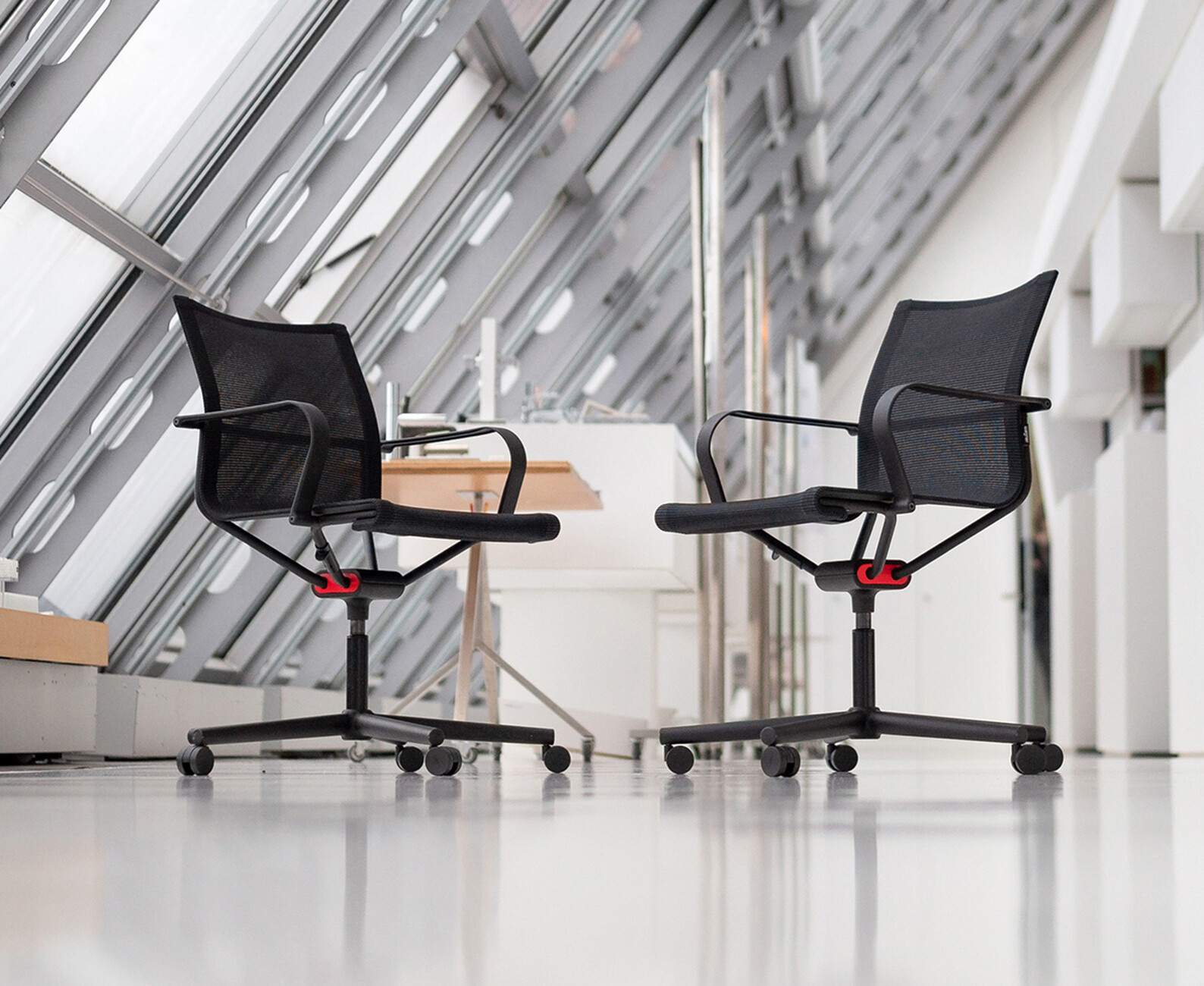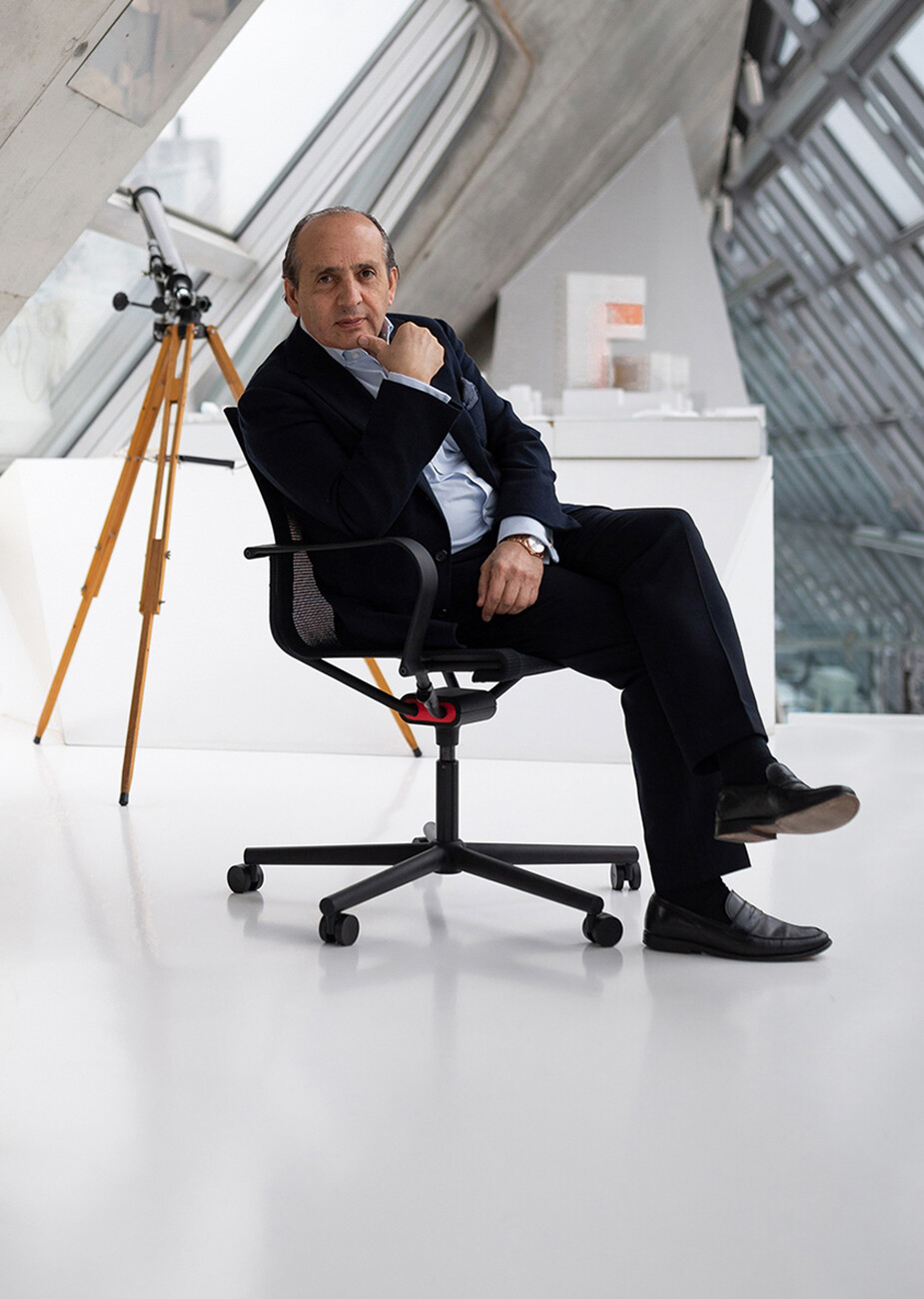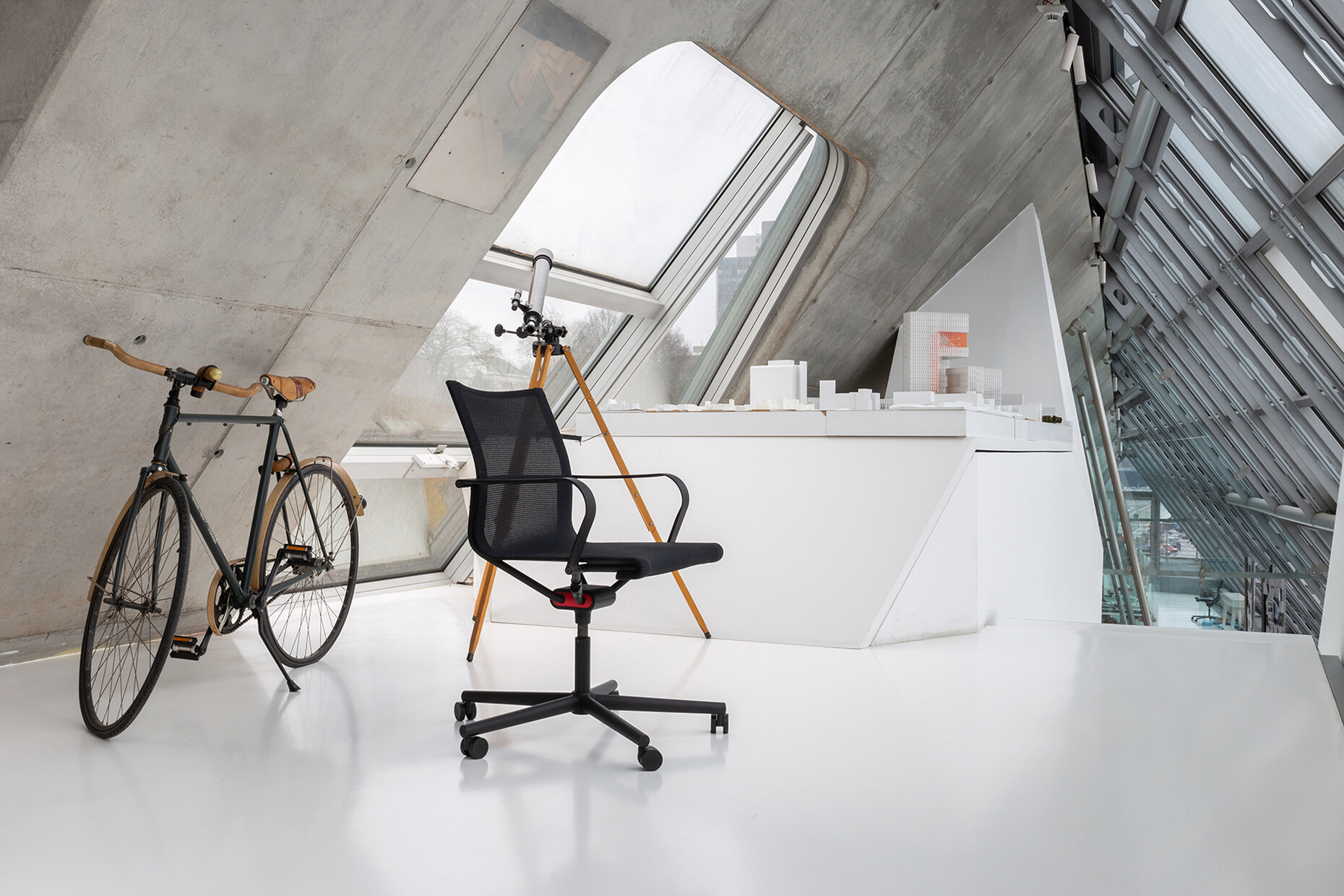Dynamic thinking
Clear forms, sustainable function and a special twist – the projects by architect Hadi Teherani are characterized by the fact that despite their significance they seem so carefully integrated into their surroundings and within a very short time become popular landmarks, whether it is the “Dancing Towers” in Hamburg, the Crane Houses in Cologne or the ICE railway station at Frankfurt Airport. The native Iranian takes an interdisciplinary approach to work and tackles not only architectural projects but also interior and product design. He aims to be holistic, and crossing borders in order to develop still further is key to his work. This is a characteristic he shares with one of the most important contemporary industrial designers: Stefan Diez. For his Hamburg studio in the Lofthaus building on Grosse Elbstrasse, Teherani was given by Wagner Living the first "D1" prototypes (almost ready for series production) so he could test them. Having put the chair and its sitting qualities through its paces, the architect decided then and there to replace the existing seating on two levels with the “D1.” “Thanks to its streamlined shape, the 'D1' makes a natural addition to the series of classic chairs,” claims Teherani. (am)
And is an investment in health, since the three-dimensional Dondola seat joint and structure of the net-covered steel frame mean static sitting is avoided. Instead, though the “D1” makes for extremely comfortable sitting, its users are encouraged to move and thanks to these tiny movements the back muscles are constantly in action, reducing the risk of posture-related problems and increasing concentration. “To be able to work creatively I have to keep on the move – that goes for mind and body. And the ‘D1’ provides the ideal support,” notes the architect in summary. This innovative chair by Stefan Diez has already received a number of distinctions, including “Selected IMM 2018 Winner” and “Stylepark Selected Orgatec 2018.” With its clear lines, no headrest and more adjustment options than customary models, the “D1” is also an ideal visual fit for the wedge-shaped rooms in the Lofthaus, where glass, concrete and white surfaces define the bright working areas; naturally, the building on the banks of the Elbe was designed by Hadi Teherani himself.











